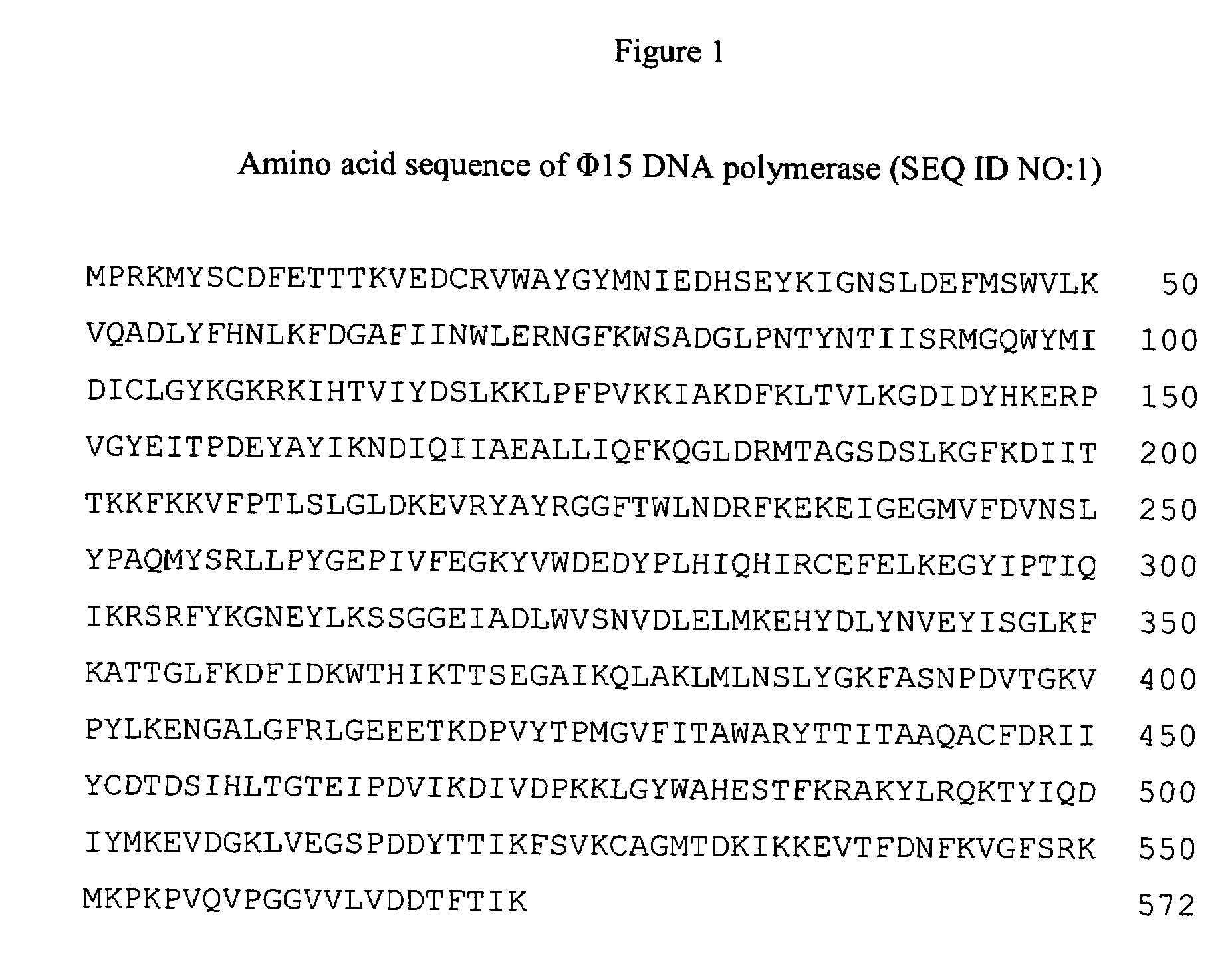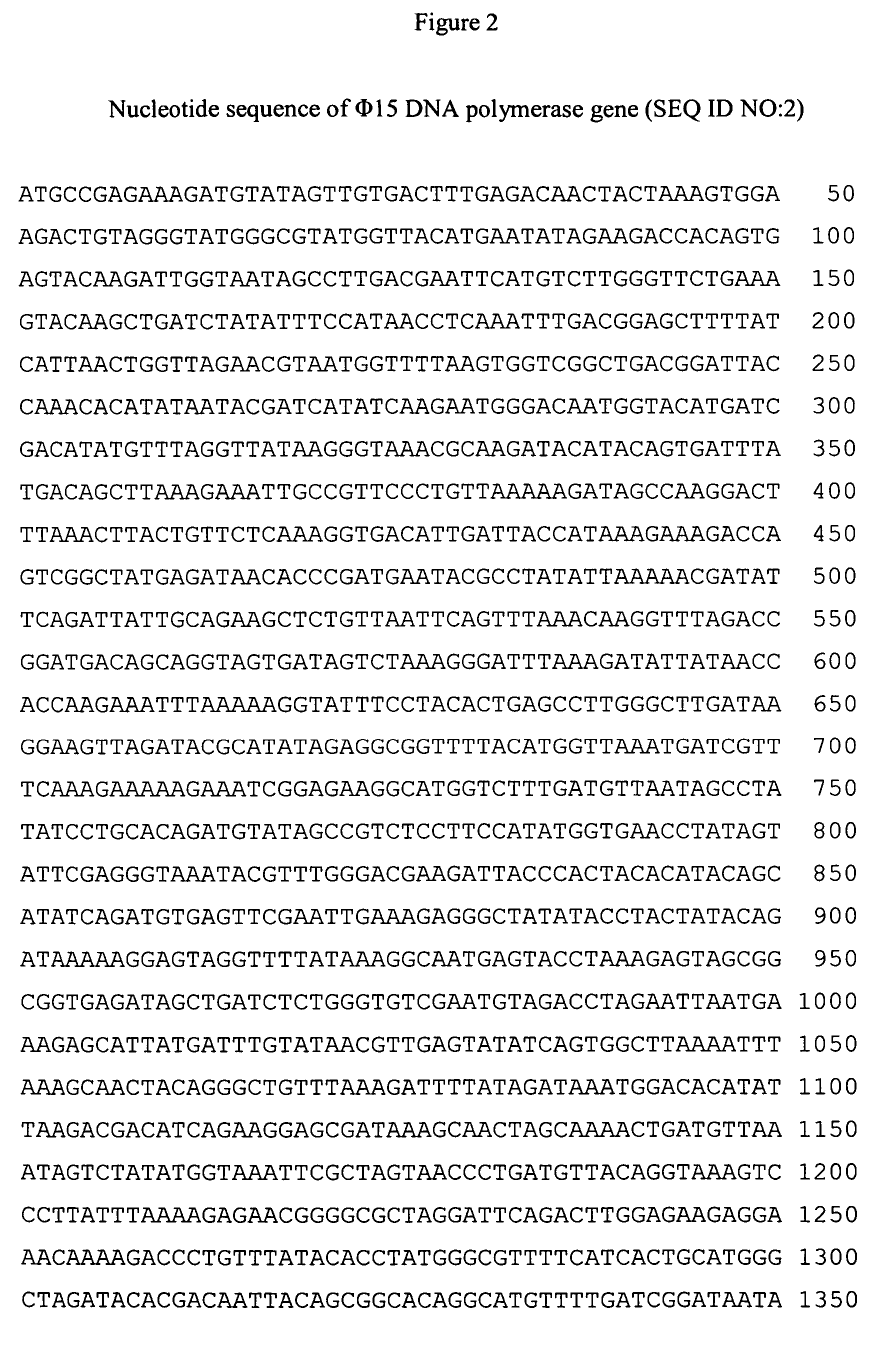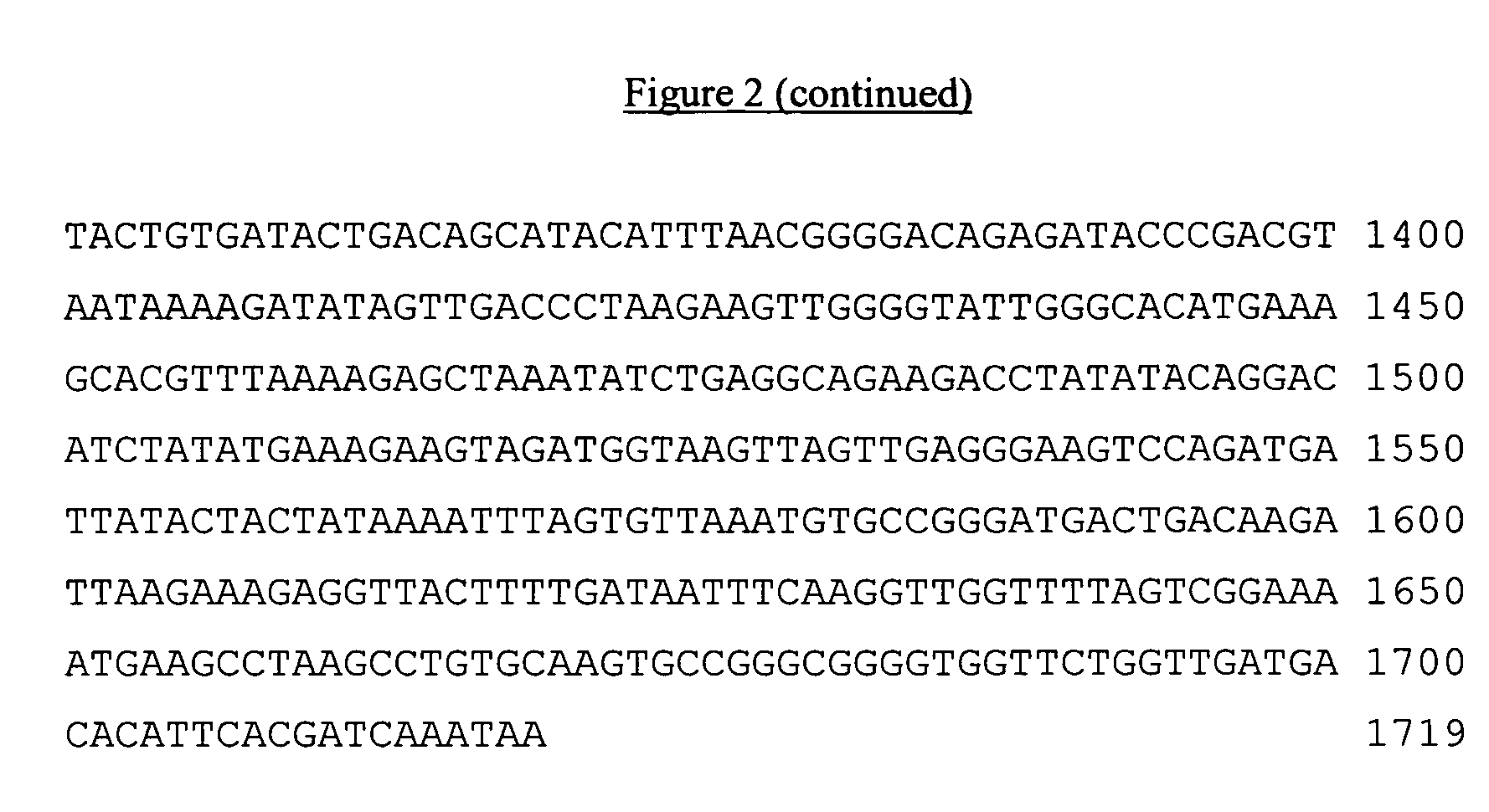PHI 15 DNA polymerase
a technology of dna polymerase and bacteriophage 15, which is applied in the field of dna polymerase, can solve the problems of lack of sensitivity, laborious methods, and high cost, and achieve the effects of reducing the number of enzymes that cannot be amplification by mda, and reducing the number of enzymes
- Summary
- Abstract
- Description
- Claims
- Application Information
AI Technical Summary
Problems solved by technology
Method used
Image
Examples
example 1
Cloning the Gene for Φ15 DNA Polymerase Expression
[0047]Bacteriophage Φ15 is an organism related to bacteriophage Φ29 (J. Mol. Evol. 1999, 48:197-208). Like the other bacteriophage in this group, it features a DNA chromosome of about 20 kb with protein attached to the 5′ ends, and many similarities in genome organization. The gene encoding Φ15 DNA polymerase was first amplified from phage DNA by PCR using the following two primers:
[0048]
CKL&PCRp15H1primer (BamHI site underlined,SEQ ID NO:3):5′ GGG ATC CCC GAG AAA GAT GTA TAG TTG TGA C 3′andCKL&PCRp15XhoIprimer (XhoI site underlined,SEQ ID NO:4):5′ AAC TCG AGG GTT ATT TGA TTG TGA ATG TGT CAT C 3′
[0049]The sequence of the BamHI primer was chosen to eliminate the original ATG codon at the 5′ terminus of the coding sequence to improve the rate of expression of the fused polymerase-GST protein. The PCR process was carried out using Pfu DNA polymerase using standard reaction conditions for this enzyme. The resulting 1.8 kb product purifie...
example 2
Expression and Purification of Φ15 DNA Polymerase
[0050]The fusion-protein clone was grown in 2L of 2× YT medium until the O.D. at 600 nm reached 1.5. Then IPTG (isopropylthiogalactoside) was added to a final concentration of 1 mM to induce expression from the plasmid. Growth was continued for an additional 2 hours, then the culture was chilled, and the cells harvested yielding 8.8 g of cell paste. Samples taken pre- and post-induction were submitted to SDS gel electrophoresis analysis (FIG. 3) that indicated induction of a new protein species of about 95,000 molecular weight as expected for the fusion of the 66,000 polymerase and 30,000 GST.
[0051]Next, the cell paste was suspended in 30 ml of ice cold PBS buffer with 2 mM DTT and 2 mM PMSF (phenylmethylsuflonylfluoride). The cells were disrupted using an Avestin EmulsiFlex™ homogenizer using 3 passes at ˜15,000 psi. Then nonionic detergent NP-40 was added to a final concentration of 1% (v / v) and the suspension shaken gently for 30 m...
example 3
Activity of Φ15 DNA Polymerase
[0053]The DNA polymerase activity of the purified Φ15 DNA polymerase fraction was compared with that of purified Φ29 DNA polymerase using radiochemical polymerase assays. Each assay reaction mixture (50 μl) contained 2 μg pUC18 DNA, 2 nmol random-sequence hexamer primer (denatured by heating to 97° C., 12 min, then cooling on ice), 0.2 mM each dNTP (including α33P dCTP) and indicated amounts of diluted polymerase. Reactions were incubated at 30° C. for 30 minutes, and then acid-insoluble radioactivity measured by precipitating with trichloroacetic acid. This assay parallels the reaction conditions used for MDA and MPRCA (U.S. Pat. No. 6,323,009) so it will reflect activity in these applications.
[0054]Using this assay, the specific activity of the Φ15 DNA polymerase measures 50-65% that of highly purified Φ29 DNA polymerase (FIG. 5). This demonstrates that the protein isolated is indeed a highly active DNA polymerase.
[0055]Those skilled in the art having...
PUM
| Property | Measurement | Unit |
|---|---|---|
| nucleic acid sequence | aaaaa | aaaaa |
| strand-displacement activity | aaaaa | aaaaa |
| length | aaaaa | aaaaa |
Abstract
Description
Claims
Application Information
 Login to View More
Login to View More - R&D
- Intellectual Property
- Life Sciences
- Materials
- Tech Scout
- Unparalleled Data Quality
- Higher Quality Content
- 60% Fewer Hallucinations
Browse by: Latest US Patents, China's latest patents, Technical Efficacy Thesaurus, Application Domain, Technology Topic, Popular Technical Reports.
© 2025 PatSnap. All rights reserved.Legal|Privacy policy|Modern Slavery Act Transparency Statement|Sitemap|About US| Contact US: help@patsnap.com



